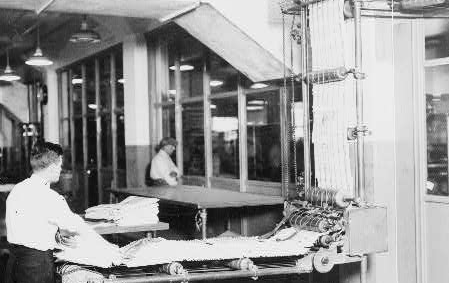Advertising used to be an accepted feature of modern life. We would watch our TV sets and sit through the commercials, at least most of the time. We would read our newspapers and magazines and browse the ads.
Now adblockers and web browsers allow us to switch off, or significantly minimize, ad exposure. And for those of us who don't use these tools, we develop ad blindness. We literally don't see what is in front of our eyes.
What has changed in recent decades? Why are we becoming ever less tolerant of, ever more desensitized to, ads? To understand a phenomenon, it's good to look at the back story. Dial back 30 years and TV watching was generally a settled experience, programming by appointment. Families and friends gathered around the television in the way people used to gather around the fireplace before the advent of central heating.
Infinite scroll anyone?
Same with newspapers and magazines. They would arrive at predictable times and in predictable places and would offer a contained experience. A newspaper, as with a book or a magazine, has a physical beginning and end.
Even with television where the actual contents of the programming need to be experienced in real-time and could not be easily browsed in advance, the likely outline of your evening's viewing used to be pretty clear from the TV guide and the station announcements. You had a reasonable expectation how your viewing experience would stack up.
“TV watching was generally a settled experience, programming by appointment. Families and friends gathered around the television in the way families used to gather around the fireplace before the advent of central heating. ”
Being able to literally see the contours of your content experience before you enter into it and then relinquishing yourself to the programming schedule creates a settled, relaxed frame of mind. This is the passive, consuming mood that TV and print advertisers love to tap. The internet and digital has aggressively disrupted this space.
THE OLD MISTAKE
It began pre-digital with the proliferation of cable channels and the advent of channel surfing. Why would you tolerate ads on a particular channel when you are already jumping between programs? Aren't the start of the ads the very opportunity to surf away?
While this fragmentation of the media space started in earnest with cable TV, it went into overdrive with digital. However, as with any shift to a fundamentally different media, marketers and advertisers sought to use the new platform in similar ways to the old ones. Just take what you were doing with TV and print, apply it to digital, and hope for the best.
The problem is it doesn't work. The interruptive nature of TV ads doesn't translate well online. People are already jumping from page to page, from article to article, from video to video, at a lightning pace and in a self-directed way that is beyond the control of even the very best marketers. Why would you stop to pay attention to an ad? Advertisers lost access to a settled audience.
This has a number of consequences. People who are sensitive to online advertising find it annoying and block it. People who are less sensitive to interruption desensitize further and eventually no longer see the ads being served before their eyes. And almost everyone gets frustrated when the number of ads on a page slows load time. With the old-fashioned commercial break, at least you knew you had enough time to get a drink.
Which compels brands and advertisers into a mutually-destructive arms race with the very people they are seeking to address. Publishers increasingly deploy strongarm tactics - autoplay videos, preroll ads, interstitials, endless pop-ups - to get you not only to watch the ad but to force your attention. Everyone is shouting louder and louder to be heard above the noise.
At the same time we have seen a deterioration in ad creative as resources get spread more thinly and the need to turn around campaigns for diminishing returns accelerates. You could describe it as a race to the bottom, or perhaps more generously as a winnowing of standards.
THE WAY AHEAD
Much already is underway, and much remains to play out. The transition from self-contained media like newspapers, magazines and broadcast TV channels to this nuclear proliferation of publishing options and platforms was always going to take years to settle down.
In many ways, we are in a golden age of content and marketing for those who practice both effectively. Bingewatching through OTT devices and streaming services is off the scale. At the same time, the aggressive consolidation of the Amazon/Apple/Facebook/Google quadropoly point to an online future that is more controlled, more settled and therefore potentially more receptive to traditional advertising techniques. Who knew even five years ago how quickly these companies would develop into our 21st century conglomerates?
CONTENT-FIRST
What this all points to is the ongoing need for content to serve the marketing needs of business. Brands need content more than ever. Complex, vertically integrated platforms need content more than ever. And the data is bearing this out. Nobody worth their salt is investing less in content these days.
Not that this is anything new. Businesses market best by taking a content-first approach, and making the content something of genuine value to the audience. Companies such as Procter & Gamble that invested in the early soap operas as a platform for sponsorship were progressive in their understanding of how to market well.
Of course, there is always going to be a place for the more traditional ad, just in a more narrow and targeted way than before. Brands and agencies should identify those media formats where people are prepared to "settle into" the program - podcasts, music streaming, conference events, long-form video, magazines etc - and then strategize ways of getting relevant messages into those spaces in a contextually smart manner. Underwriting, signage, sponsored content, product placement, and yes old-school ad creative - they all have a place in the modern marketing mix.



